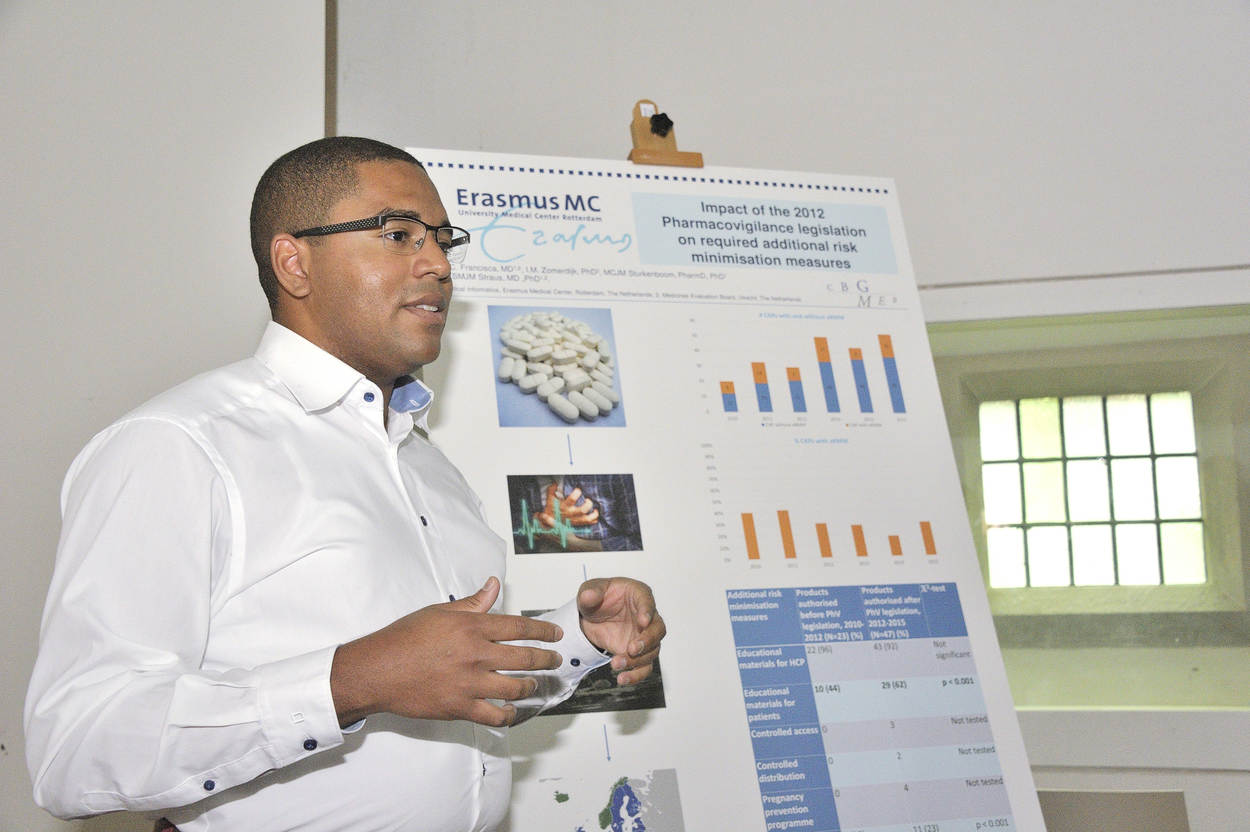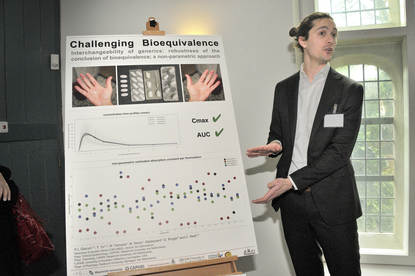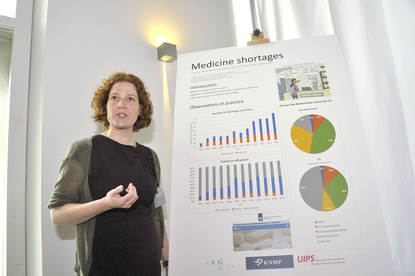Regulatory science provides the Medicines Evaluation Board (MEB) with up-to-date data, knowledge and expertise based on current scientific insights, for optimal evaluation and marketing authorisation of medicinal products and novel foods.
The studies that support the MEB's regulatory process are very diverse. The MEB Regulatory Science programme presents several studies as a Poster Pitch.
Poster Pitch by R.D.C. Francisca, MD
Remy Francisca presents his study on the impact of the 2012 Pharmacovigilance legislation on required additional risk minimisation measures.
The MEB logo, next to: Poster Pitch by R.D.C. Francisca, MD: Impact of the 2012 Pharmacovigilance legislation on required additional risk minimisation measures.)
SILENCE
What the motivation was for this research
is that we wanted to see what the effect was of a law revision
which came into force in July of 2012 on additional risk minimisation measures.
These are measures which can be employed to minimise the risks
associated with use of medicinal products that are extra.
These are on top of measures that are always employed for all drugs
and should be used sparingly in exceptional circumstances.
But previous research has shown
that one in three drugs, up to 2009, got these measures,
and we wanted to see what the effect of the law on this percentage was.
We used publicly available data,
which is available on the website of the European Medicines Agency,
where they publish the European Public Assessment Reports.
These EPARs contain information on the initial assessment of the drugs
that allowed them to be licensed.
They contain information on the marketing authorisation.
And they also contain information on the risk management plan,
which is what we needed, to get our data.
What the results of this research are, is that we found that before the law revision,
which is 2011 and 2010, 38 percent of the drugs were assigned additional measures,
and after the law revision you see that that percentage drops to 28 percent.
So, it's a 10 percent drop,
but when you look at it through statistical means, it's not significant.
So, it could still be sort of by chance that we find these results.
And what it means for clinical practice, and patients in general, is that,
when you look at the types of measures that can be employed which are extra,
you see that extra communication of risks to patients has increased.
So, we inform patients more often about what risks are associated
with the use of their drug.
(The MEB logo appears on a white background.)











